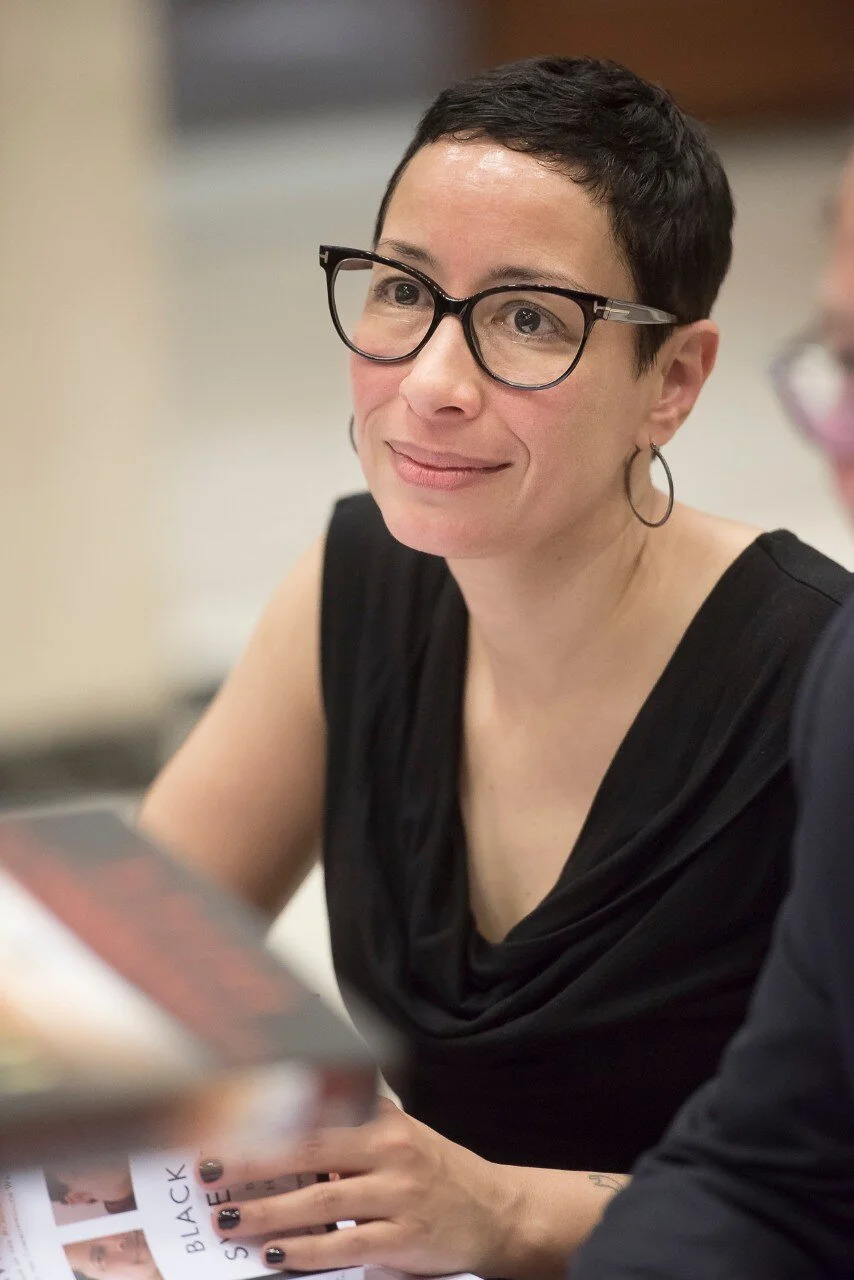Senate of Canada honours Black artists with a new installation featuring the work of Vancouver's Chantal Gibson
The local educator confronts and challenges structural racism in Canada through her art
Who’s Who? creator Chantal Gibson found the 1927 book upon which her work is based at a Vancouver second-hand store. Now, her work is in the Senate. Photo via SIAT
VANCOUVER ARTIST-EDUCATOR Chantal Gibson has made it to the Senate of Canada—via her artwork, which is on display at the federal building in honour of the nation’s Black artists.
Gibson’s mixed-media Who’s Who?, a threaded sculpture made of a historical book and black mercerized cotton, is being featured in the foyer outside the Canadian Senate Chamber alongside Winnipeg painter Yisa Akinbolaji’s Stolen Identities until June 2021.
Senator Patricia Bovey, chair of the Senate Artwork and Heritage Advisory Working Group, spearheaded the installation to reflect a wider representation of Canadians.
Who’s Who? creator Chantal Gibson is a lecturer in SFU’s School of Interactive Arts and Technology (SIAT). Photo via SIAT
A lecturer in SFU’s School of Interactive Arts and Technology, Gibson challenges historic and systemic racism through her work in general and in Who’s Who? in particular. The piece makes up part of a mixed-media series called Historical In(ter)ventions, in which she explores the omission of Black voices in Canadian historical texts by altering books with braided and twisted black cotton thread.
To create the work, Gibson punched holes in the pages of the 1927 edition of Who’s Who in Canada and sewed nearly 2,000 yards of thread within it.
The piece also features an e-reader that has a video of her turning the pages of the original book. It’s one she found at a local second-hand store and that contained mostly white faces.
Through text and memory objects, Gibson’s art challenges and confronts Canada’s structural and systemic racism.
“Artwork allows us to question power and authority, and it asks the viewer to think about whose voices are included in national narratives and whose are omitted or erased,” Gibson said in a release.
Stolen Identities, in acrylic and oil on canvas, shows Louis Riel within a Métis dream catcher hanging from Winnipeg trees. The work incorporates traditional colours and patterns of Akinbolaji’s native Nigeria with Indigenous motifs.
“Stolen Identities is to bring attention to the plight of the Indigenous people of Canada,” Akinbolaji said. “Their cultural artifacts and historical heroes — like you have on that painting — are celebrated, yet their women and girls have been regularly missing or murdered.”
Bovey noted that the installation arose out of the need better represent people whose voices have been omitted or erased in Canadian history and in response to the recent rise of the Black Lives Matter movement.
“What is the point of this wall? It is essential that the Canadian voices we hear and present reflect the diversity and depth of our regions and nation,” Bovey said in the release. “The national response to this installation has been overwhelming. May we as senators and Canadians listen and build on the messages these works convey.”
The only other artwork in the space is a bust of Queen Elizabeth II. Bovey said she hopes that the project to honour Black Canadian artists will continue beyond June 2021.














